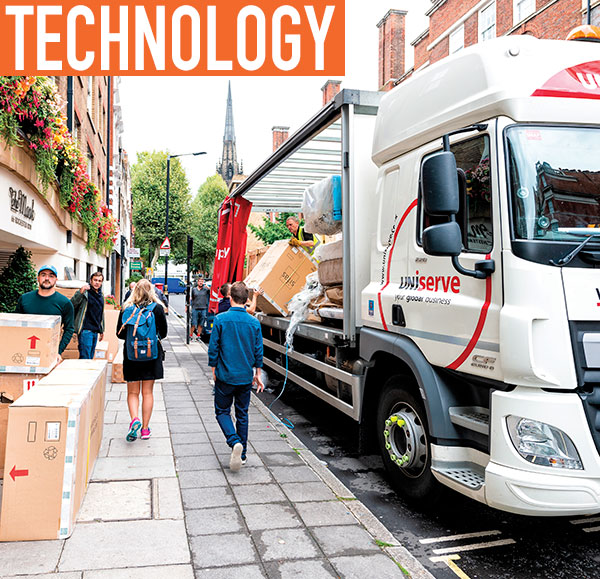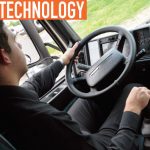To some, fleet electrification could never be a reality. Perhaps the infrastructure of your area wouldn’t allow for a beneficial conversion, the money it would take to convert wouldn’t justify the money you may or may not save, or you just prefer a good ol’ internal combustion engine (ICE) to run your fleet. Yet no matter your engine preference or speculation of the money you do or don’t think you’ll save, facts speak volumes.
In April of this year, AMPLY Power released a white paper that revealed America’s 25 largest metropolitan areas could see an average savings of 37% on fuel costs if they electrified their bus and light-duty fleets. The paper also stated that electric fleets that charge during off-peak hours could save as much as 60% on fueling versus ICE or unmanaged EV fleets.
AMPLY recently released the data for its medium-duty study, and it could surprise you.
MEDIUM-DUTY FLEETS
The Doller Per Gallon-equivalent (DPGe)—or a direct comparison for electric dollar per gallon-equivalent to gasoline or diesel—for medium-duty vehicles falls similarly in line to light-duty vehicles, with near linear trends and inflection points in each metro. Interestingly, all six metros for which fueling light-duty vehicles with gasoline is cheaper than fueling with electricity (Boston, Phoenix, Detroit, San Diego, Denver, and San Antonio) are similarly more expensive for medium-duty vehicles. However, for medium-duty vehicles, AMPLY doubled the list of metros where electricity is more expensive than gasoline—now including Dallas, Washington DC, Atlanta, Minneapolis-St Paul, St. Louis, and Charlotte. Thus, for medium-duty vehicles, AMPLY found that, from a fueling cost alone, just over 50% of the Top 25 Metros have electricity rate structures that favor EV fleets over ICE fleets. This difference is driven by the stated efficiencies of medium-duty vehicles versus vehicle efficiencies for light-duty electric vehicles.
A summary of the DPGe versus DPG for each city is presented in the table.
METHODOLOGY
A city’s electricity rate structure and the way a fleet uses its vehicle can be complex and varied. Therefore, AMPLY provided a range for this figure between a well-managed or automated charging scenario (using an optimized charging strategy) and an unmanaged charging scenario (without having or with a suboptimal charging strategy). You can see both numbers reflected in the table.
To calculate kWh usage per day, AMPLY similarly relied on FHA data for vehicle miles traveled (VMT) and public manufacturer data for vehicle efficiency factors. The Federal Highway Administration states that medium-duty vehicles on average travel 50.3 miles per day, and publicly-available manufacturer data indicate that medium-duty vehicles travel 0.81 miles per kWh, according to Workhorse, manufacturer of electric vehicles. Thus the average medium-duty vehicle consumes 62.1 kWh per day. From FHA, AMPLY assumes medium-duty ICE vehicles have an average MPG of 17.4.
Given the majority of vehicles will be municipal fleet vehicles much like light-duty vehicles, AMPLY assumes that medium-duty vehicles have an identical charge profile to light-duty vehicles—with unmanaged charging producing 10 kW of demand per vehicle (assuming one L2 charger per vehicle) and managed charging resulting in 7 kW of demand per vehicle (assuming a slightly less than one L2 charger to one vehicle ratio).
All other assumptions used in the analysis for medium-duty vehicles were identical to the assumptions used in the assessments for light-duty and passenger buses, using city-specific rates and rate structures to calculate annual electricity pricing costs.

LOCATION & MANAGEMENT
As you can see from the stats in the table, location and the method of charge makes all the difference with DPGe. Some states offer incentives to electrify, others charge fees for charging during peak times. Fleets that automate or better manage vehicle charging see savings in all locations except Atlanta (where the price is the same). Before you decide to convert your fleet, take your state’s policies into careful consideration as well as develop an automated or well-managed fleet charging system to gain all the benefits of an electric medium-duty fleet.
FOR MORE INFORMATION
AMPLY is a charging-as-a-service company that de-risks and accelerates the adoption of electric-powered bus and truck fleets. To see more about the company and read the white paper mentioned above, visit www.amplypower.com.
MODERN WORKTRUCK SOLUTIONS:
OCTOBER 2019 ISSUE
Did you enjoy this article?
Subscribe to the FREE Digital Edition of Modern WorkTruck Solutions magazine.





